2.4: Graficar ecuaciones lineales- Respuestas a los ejercicios de tarea
- Page ID
- 117417
\( \newcommand{\vecs}[1]{\overset { \scriptstyle \rightharpoonup} {\mathbf{#1}} } \) \( \newcommand{\vecd}[1]{\overset{-\!-\!\rightharpoonup}{\vphantom{a}\smash {#1}}} \)\(\newcommand{\id}{\mathrm{id}}\) \( \newcommand{\Span}{\mathrm{span}}\) \( \newcommand{\kernel}{\mathrm{null}\,}\) \( \newcommand{\range}{\mathrm{range}\,}\) \( \newcommand{\RealPart}{\mathrm{Re}}\) \( \newcommand{\ImaginaryPart}{\mathrm{Im}}\) \( \newcommand{\Argument}{\mathrm{Arg}}\) \( \newcommand{\norm}[1]{\| #1 \|}\) \( \newcommand{\inner}[2]{\langle #1, #2 \rangle}\) \( \newcommand{\Span}{\mathrm{span}}\) \(\newcommand{\id}{\mathrm{id}}\) \( \newcommand{\Span}{\mathrm{span}}\) \( \newcommand{\kernel}{\mathrm{null}\,}\) \( \newcommand{\range}{\mathrm{range}\,}\) \( \newcommand{\RealPart}{\mathrm{Re}}\) \( \newcommand{\ImaginaryPart}{\mathrm{Im}}\) \( \newcommand{\Argument}{\mathrm{Arg}}\) \( \newcommand{\norm}[1]{\| #1 \|}\) \( \newcommand{\inner}[2]{\langle #1, #2 \rangle}\) \( \newcommand{\Span}{\mathrm{span}}\)\(\newcommand{\AA}{\unicode[.8,0]{x212B}}\)
Grafismo y talud
- \(\frac{1}{3}\)
- undefined
- \(-3\)
- undefined
- \(\frac{4}{3}\)
- \(\frac{1}{2}\)
- undefined
- \(-\frac{1}{3}\)
- \(\frac{16}{7}\)
- \(-\frac{7}{17}\)
- \(\frac{1}{16}\)
- \(\frac{24}{11}\)
- \(\frac{1}{16}\)
- \(x=-5\)
- \(y=-5\)
- \(x=\frac{23}{6}\)
- \(y=-12\)
- \(y=-\frac{29}{6}\)
Ecuaciones de Líneas
- \(y=2x+5\)
- \(y=-\frac{3}{4}x-1\)
- \(y = −6x + 4\)
- \(y = − \frac{1}{4} x + 3\)
- \(y = \frac{1}{3} x + 3\)
- \(x = 4\)
- \(y = −3x + 5\)
- \(y = − \frac{1}{10} x − \frac{37}{10}\)
- \(y = \frac{7x}{3} − 8\)
- \(y = 4x\)
- \(y = −4x + 3\)
- \(y = \frac{1}{10} x − \frac{3}{10}\)
- \(y = − \frac{4}{7} x + 4\)
- \(y=\frac{5}{2}x\)
- N/A
-
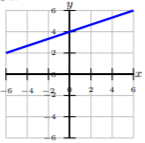
Figura\(\PageIndex{1}\)
-
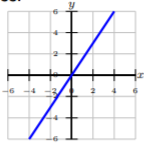
Figura\(\PageIndex{2}\)
-
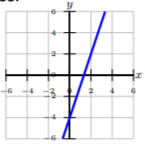
Figura\(\PageIndex{3}\)
-

Figura\(\PageIndex{4}\)
-
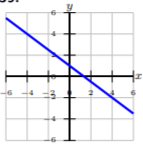
Figura\(\PageIndex{5}\)
-
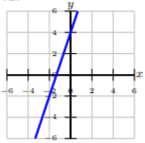
Figura\(\PageIndex{6}\)
- \(x-2=0\)
- \(y − (−5) = 9(x − (−1))\)
- \(y − (−2) = −3(x − 0)\)
- \(y − (−3) = \frac{1}{5} (x − (−5))\)
- \(y − 2 = 0(x − 1)\)
- \(y − (−2) = −2(x − 2)\)
- \(y − 1 = 4(x − (−1))\)
- \(y − (−4) = − \frac{2}{3} (x − (−1))\)
- \(y = − \frac{3}{5} x + 2\)
- \(y = − \frac{3}{2} x + 4\)
- \(y = x − 4\)
- \(y = − \frac{1}{2} x\)
- \(y = − \frac{2}{3} x − \frac{10}{3}\)
- \(y = − \frac{5}{2} x − 5\)
- \(y = −3\)
- \(y − 3 = −2(x + 4)\)
- \(y + 2 = \frac{3}{2} (x + 4)\)
- \(y + 3 = − \frac{8}{7} (x − 3)\)
- \(y − 5 = − \frac{1}{8} (x + 4)\)
- \(y + 4 = −(x + 1)\)
- \(y = − \frac{8}{7} x − \frac{5}{7}\)
- \(y = −x + 2\)
- \(y = − \frac{1}{10} x − \frac{3}{2}\)
- \(y=\frac{1}{3}x+1\)
Líneas paralelas y perpendiculares
- \(m_{||} = 2\)
- \(m_{||} = 1\)
- \(m_{||} = − \frac{2}{3}\)
- \(m_{||} = \frac{6}{5}\)
- \(m_{⊥} = 0\)
- \(m_{⊥} = −3\)
- \(m_{⊥} = 2\)
- \(m_{⊥} = − \frac{1}{3}\)
- \(y=5\)
- \(y − 4 = \frac{9}{2} (x − 3)\)
- \(y − 3 = \frac{7}{5} (x − 2)\)
- \(x=4\)
- \(y + 5 = −(x − 1)\)
- \(y − 2 = \frac{1}{5} (x − 5)\)
- \(y − 2 = − \frac{1}{4} (x − 4)\)
- \(y + 2 = −3(x − 2)\)
- \(y = −2x + 5\)
- \(y = − \frac{4}{3} x − 3\)
- \(y = − \frac{1}{2} x − 3\)
- \(y = − \frac{1}{2} x − 2\)
- \(y = x − 1\)
- \(y=2\)
- \(y=-x+3\)
- \(y=-2x+5\)


